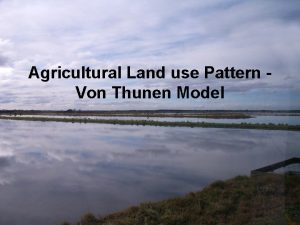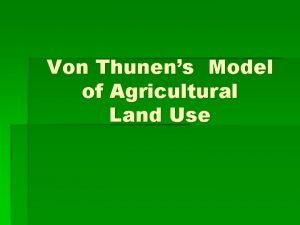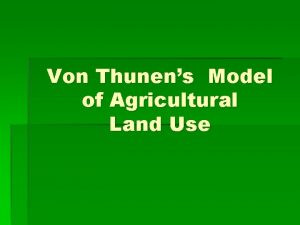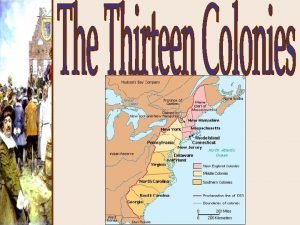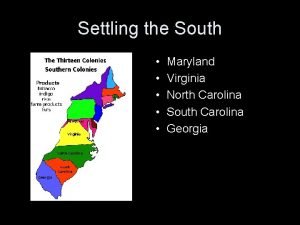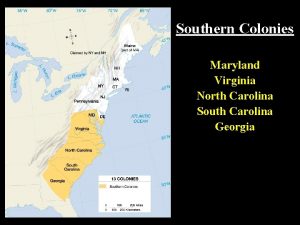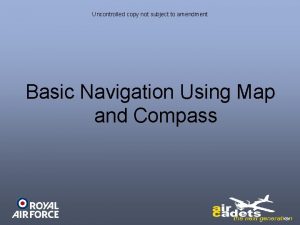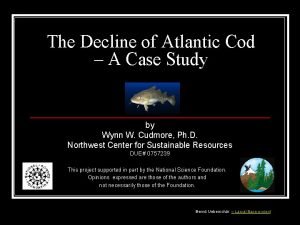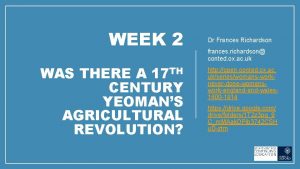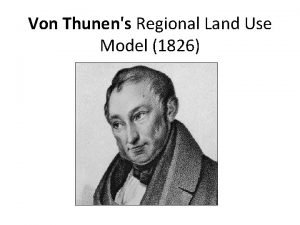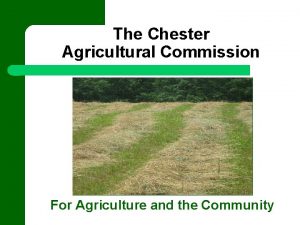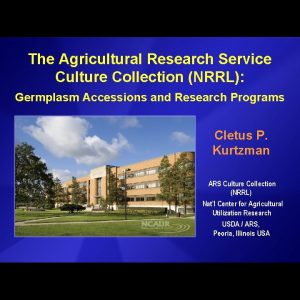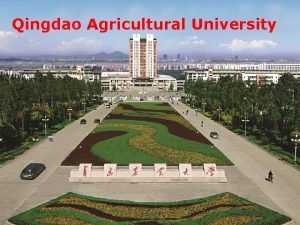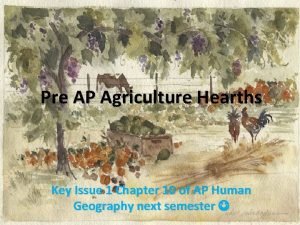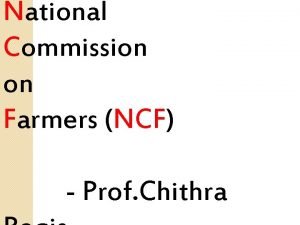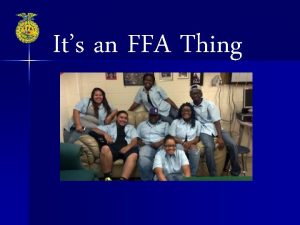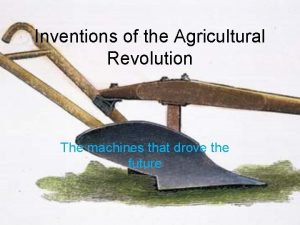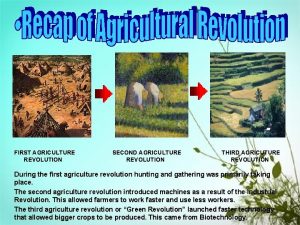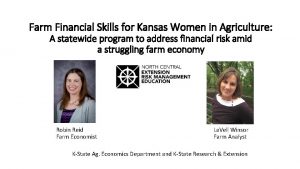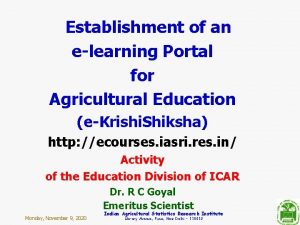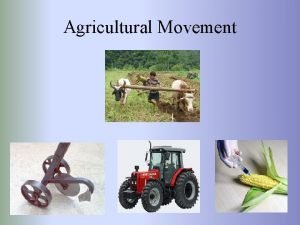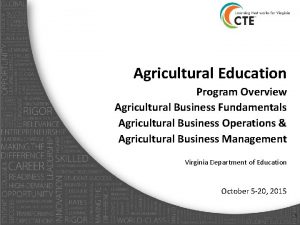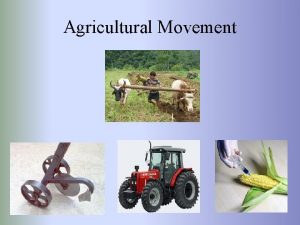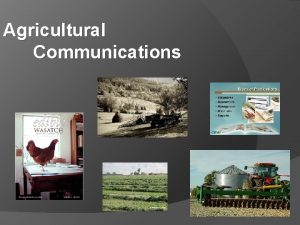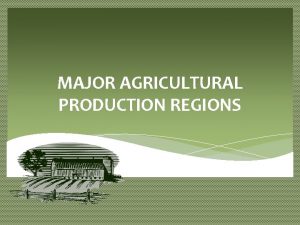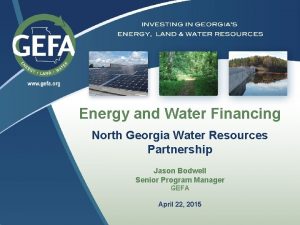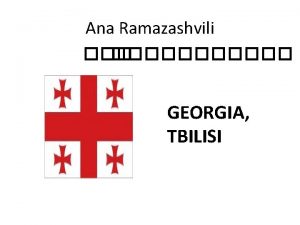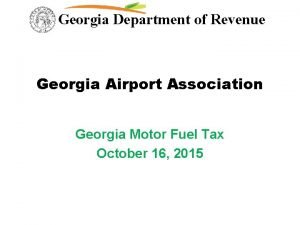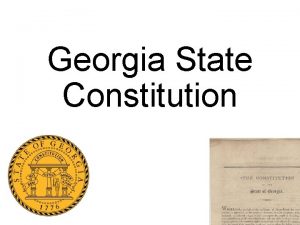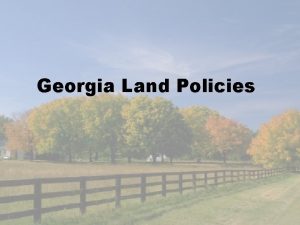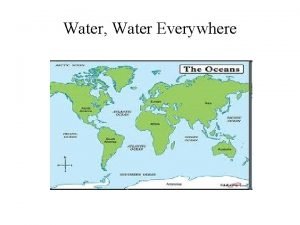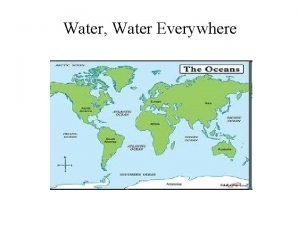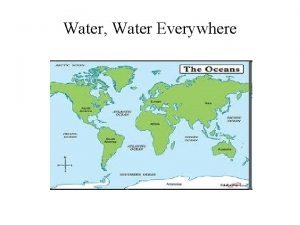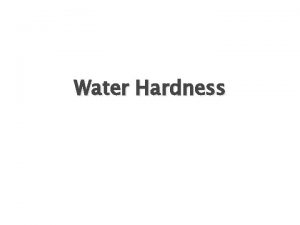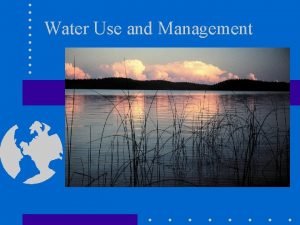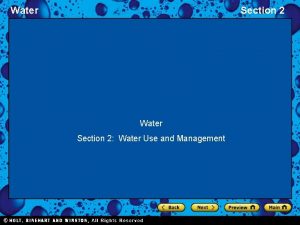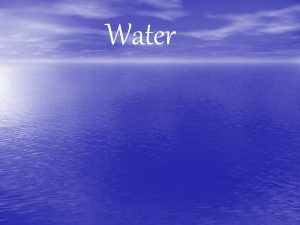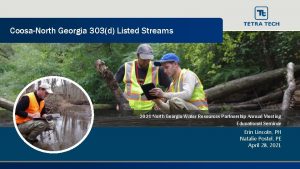NORTH GEORGIA AGRICULTURAL WATER USE STUDY North Georgia







































- Slides: 39

NORTH GEORGIA AGRICULTURAL WATER USE STUDY North Georgia Water Resources Educational Seminar Erin Lincoln, PH April 22, 2015 WATER NATURAL RESOURCES ENVIRONMENT INFRASTRUCTURE ENERGY

Introduction

Introduction • Determine existing permitted and non-permitted water use information available • Determine water use needs for specific agricultural products – Crops (corn, apple orchards, etc. ) – Poultry – Livestock (beef, dairy, swine, etc. ) • Determine gaps in existing data and plan to fill the gaps

Introduction • North Georgia Water Resources Partnership • Northwest Georgia Regional Commission • Coosa-North Georgia Water Planning Region – 18 Counties – Chattahoochee, Coosa, and Tennessee Watersheds – Blue Ridge, Ridge and Valley, Piedmont Eco-Regions

Introduction

North Georgia Physiographic Provinces

North Georgia Crop Acreage

North Georgia Crop Acreage • 2008 Georgia Land Use Trend (GLUT) – Natural Resources Spatial Analyst Laboratory (NARSAL) – LANDSAT data • 2014 Farm Gate Value Report – College of Education and Agricultural Sciences – County Extension Agents

North Georgia Crop Acreage

North Georgia Crop Acreage

Estimated Irrigated Acreage • Agricultural Permitting Unit of GAEPD – Permit required for withdrawals of 100, 000 GPD – Small farms typically don’t need a permit • National Environmentally Sound Production Agriculture Laboratory (NESPAL) – Agricultural Permitting Unit of GAEPD – Agricultural and Water Conservation and Metering Program (GSWCC) – GIS Imagery

GAEPD Permits • 182 Agricultural Irrigation Permits – 176 surface water withdrawals – 6 groundwater withdrawals • Withdrawal permits for 13, 852 acres of crops – 22% to 36% of total row crop acreage

Estimated Crop Irrigation Requirements

Estimated Crop Irrigation Requirements • Over 40 Crop Studies/Papers Reviewed – North Georgia crop water requirements – North Carolina Irrigation Guide (NRCS) • University of Georgia (CAES) – Extension agents/researchers – UGA Research Farms – Agricultural Water Demand Report (NESPAL) • Crop water usage models • Cooperative extension service irrigation surveys

Estimated Crop Irrigation Requirements • Groundwater Use Act (OCGA § 12 -5 -90) – All new agricultural withdrawal permits or amended permits issued after July 1, 2003 be metered – Farmers must install meters themselves – GSWCC collects water use data • 6% of Withdrawals in NGWRP Metered – Annual irrigation depth – No information on irrigated acreage, crop type, or monthly usage

Estimated Crop Irrigation Requirements • Irrigation amounts extremely variable between farmers – Desired yields/personal preference – Soil/topography – Irrigation system efficiency rates • On average, crops typically need 1 in/week – Fruit, vegetables, and ornamentals need more – 1. 1 to 1. 3 in/week due to irrigation efficiencies – No irrigation during wet years

Average Monthly Precipitation

Estimated Crop Irrigation Requirements

Estimated Row Crop Water Use

Estimated Forage Crop Water Use

Estimated Fruit & Nut Water Usage

Estimated Vegetable Water Use

Estimated Ornamental Water Use

Estimated Poultry & Livestock Water Usage

Estimated Poultry & Livestock Water Usage • 19 withdrawal permits for poultry & livestock • Total number of animals and water usage sources – – 2014 Farm Gate Value Report GA Poultry Federation University of Georgia (CAES) Agricultural Water Demand Report (NESPAL) • Water usage depends on animal type and season – Animal size and lifespan – Consumption and evaporative cooling

Estimated Poultry Water Usage

Estimated Livestock Water Usage

Estimated Poultry Water Usage

Estimated Beef Cattle Water Usage

Estimated Other Livestock Water Usage

Estimated Region-Wide Water Usage

Estimated Region-Wide Water Usage

Estimated Region-Wide Water Usage

Estimated Gordon County Water Usage

Estimated Floyd County Water Usage

Estimated Habersham County Water Usage

Estimated Region-Wide Water Usage • 7, 402 MGY annually in NGWRP Region • Gordon, Floyd, and Habersham County use 3, 388 MGY annually • Row crop irrigation has the estimated highest water usage • Poultry and ornamentals have the second and third highest usage

Next Steps • Confidence in estimated poultry and livestock water use • Reduce uncertainty in crop irrigation usage – Actual irrigated acreage unknown – Irrigation depths change annually • Focus on Floyd and Gordon Counties – GIS crop acreage confirmation and validation – Expand metering program – Targeted irrigation surveys

QUESTIONS? Erin Lincoln, PH Tetra Tech erin. lincoln@tetratech. com 770. 738. 6040 Special Thanks To: NGWRP NGRC GAEPD GA Poultry Federation UGA CAES GSWCC
 Water and water and water water
Water and water and water water Von thunen agricultural land use model
Von thunen agricultural land use model Six assumptions of von thunen model
Six assumptions of von thunen model Six assumptions of von thunen model
Six assumptions of von thunen model Virginia, maryland, north carolina, south carolina, georgia
Virginia, maryland, north carolina, south carolina, georgia Maryland virginia north carolina south carolina and georgia
Maryland virginia north carolina south carolina and georgia Virginia, maryland, north carolina, south carolina, georgia
Virginia, maryland, north carolina, south carolina, georgia Case study georgia tech
Case study georgia tech Gridworld case study answers
Gridworld case study answers True north vs magnetic north
True north vs magnetic north North east and north cumbria integrated care system
North east and north cumbria integrated care system Lesson quiz 14-1 north and south
Lesson quiz 14-1 north and south The north pole ____ a latitude of 90 degrees north
The north pole ____ a latitude of 90 degrees north North atlantic cod case study
North atlantic cod case study Why is north korea switched off from globalisation
Why is north korea switched off from globalisation Colin farrel north water
Colin farrel north water Case series
Case series Retrospective cohort study vs prospective cohort study
Retrospective cohort study vs prospective cohort study What is method study
What is method study Study less study smart
Study less study smart Phytogeographic regions of india
Phytogeographic regions of india Differentiate between time study and motion study
Differentiate between time study and motion study Distinguish between time study and motion study
Distinguish between time study and motion study Study of inland water
Study of inland water The agricultural revolution
The agricultural revolution Von thunen 1826
Von thunen 1826 Von thunen 1826
Von thunen 1826 Paris basin climate
Paris basin climate Chester agricultural center
Chester agricultural center Nrrl culture collection
Nrrl culture collection Ffa brotherhood
Ffa brotherhood Qingdao agricultural university
Qingdao agricultural university Hearths of agriculture
Hearths of agriculture National commission on farmers chairman
National commission on farmers chairman Ffa brotherhood pledge
Ffa brotherhood pledge Agricultural revolution inventions
Agricultural revolution inventions Agricultural revolution
Agricultural revolution Agricultural accounting and finance kansas
Agricultural accounting and finance kansas To practice brotherhood honor agricultural
To practice brotherhood honor agricultural E learning portal on agricultural education
E learning portal on agricultural education

